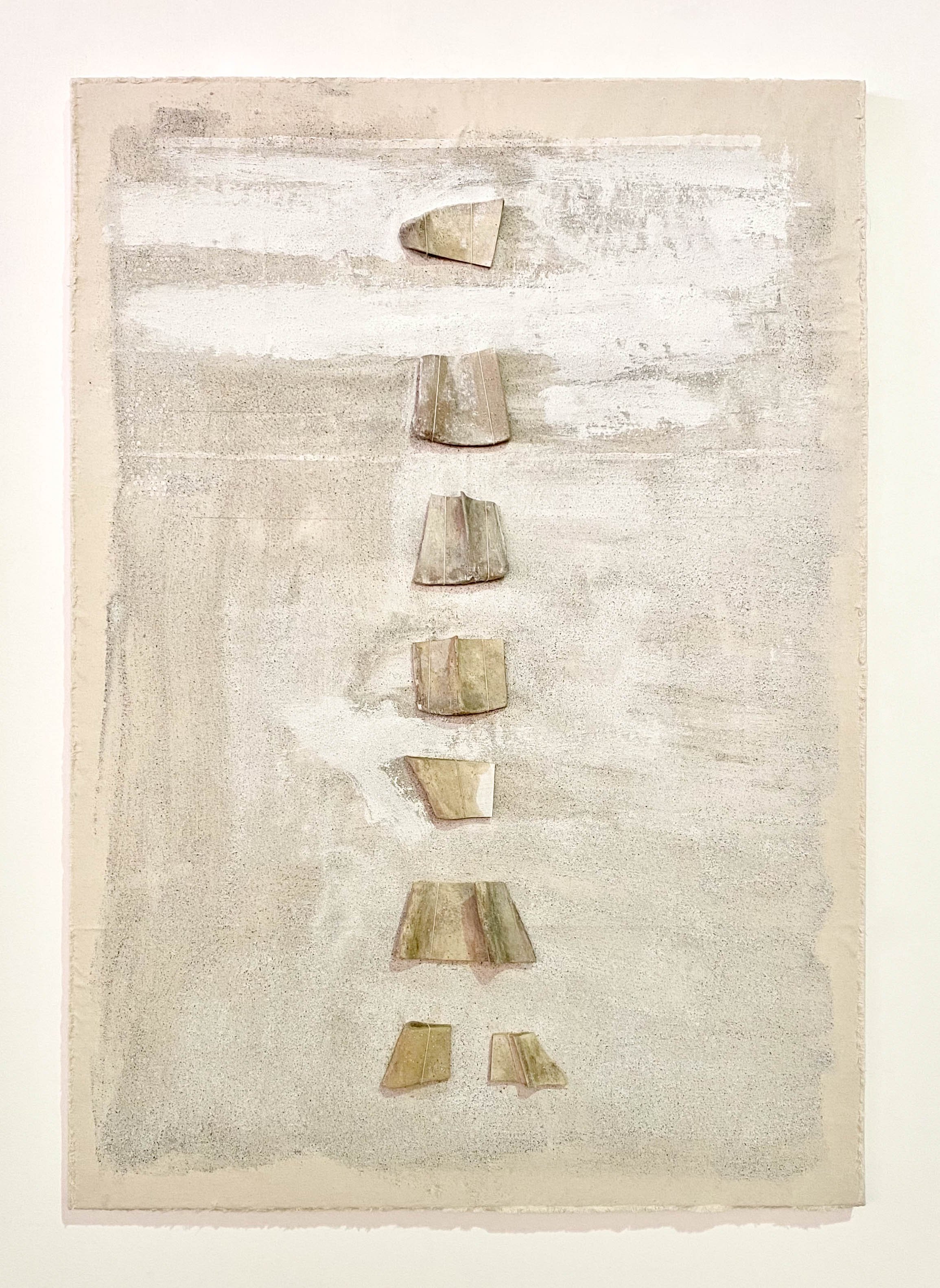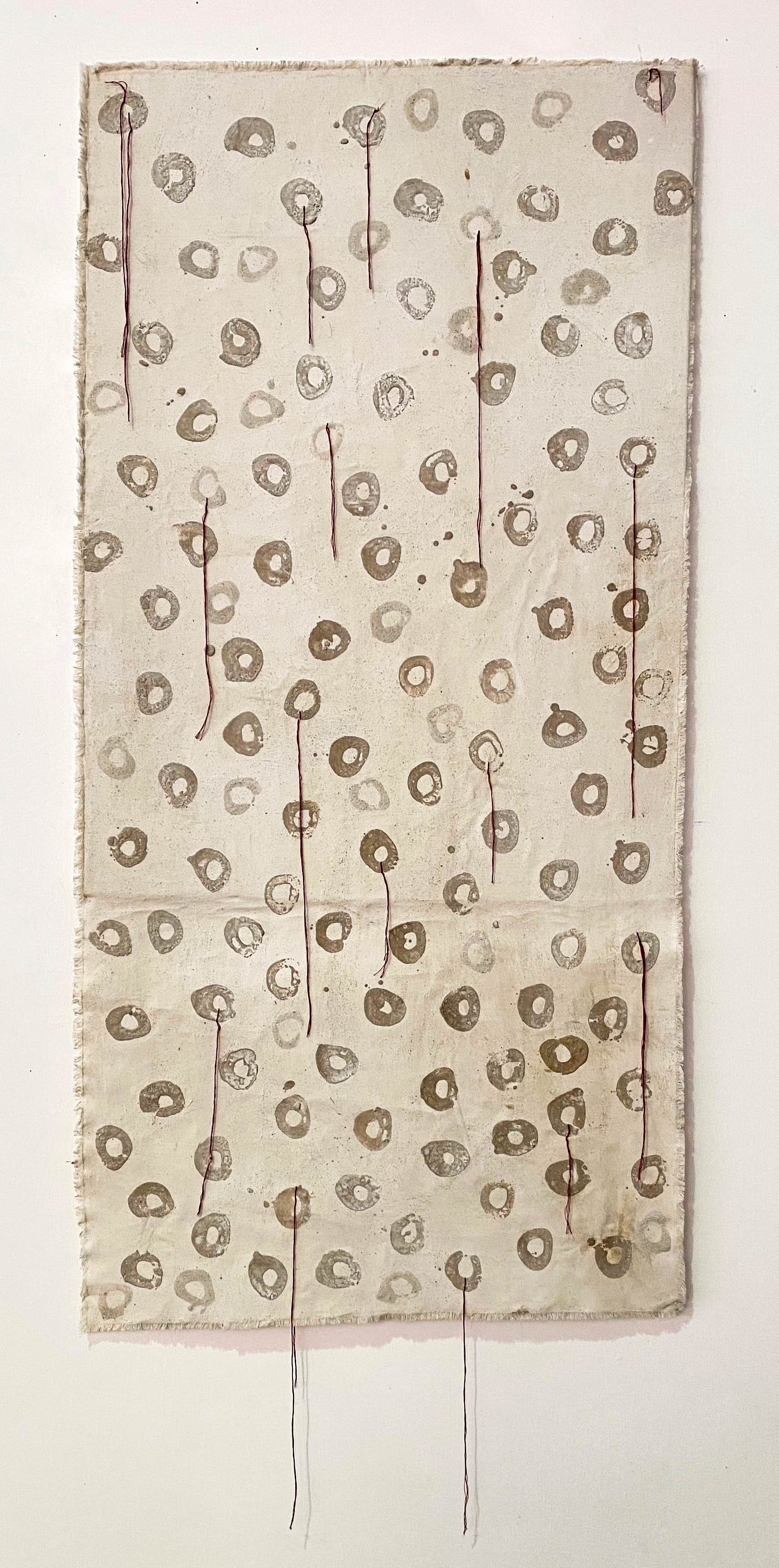ESPAÑOL | ENGLISH
JAMIE DENBURG HABIE / FEBRUARY - APRIL 2022
CARNE, COBRE / CUERPO, COME
Carne, Cobre / Cuerpo, Come (Flesh, Copper / Body, Eats) explores the ways in which language is incarnated in the body and how the body functions as a psychosomatic mediator between subjects and their spatial and temporal experiences.
Based on the repeated use of materials and symbols, each work attempts to restore agency to the body through the signification, resignification and designation of the elementary particles of language, while allowing the body to be explored as a linguistic gesture in perpetual movement. With these elements, one of the elemental concerns of this exploration arises: how are words embodied, and what effect do they have on the psyche and flesh of the collective body?
Recent neuroscientific theories postulate that the neurons that encode language evolved from older cells that record the physical sensations a body feels as it moves through space. As a neural consequence, words are learned and encoded as three-dimensional objects, and stringing them together (thinking and speaking) is a record of movement; seen in this way, each letter could be considered an embodied being in constant circulation.
As a catalyst of thought, language is a fundamental experience to (re) cognize and (re)cognize ourselves in relation to the world, so it is essential to think about the relationship of mutual affectation between body and word that results from the daily exercise of naming and experiencing the corporeality in relation to environments. The sensation of being an "I", of being a thinking mind, contained within a skin capsule, comes from a long evolution of algorithms, genetic and cognitive, that allow us to construct and feel a coherent and stable reality.
One of these algorithms comes from the genetic code, which, despite being registered in our DNA, also allows the spontaneous change of bodily reality through epigenetics, which explains how the environment, culture and lived experiences alter the activation and deactivation of genes. Thus, the words we learn, use and pronounce could be considered epigenetic agents.
Another pattern, the learning and coding of language, is also embodied in the body according to cognitive scientist and philosopher, Noam Chomsky, who proposes a computational program of recursion as the essential feature of human language. This explains why our brain follows steps, observes patterns and learns them, only to be able to complete those patterns when it can barely see a trace of what it has learned.
In addition to exploring the relationship between the body and consciousness, the materials in Carne, Cobre / Cuerpo, Come remind us of the interface between the body and the earth: calcium in the bones, copper in the muscles and iron flowing in the blood. In this morphological exploration of the world and the body in which symbols and words originate both internally and externally it is necessary to observe Jamie Denburg Habie's gestures that attempt to explore the "flesh in words, and letters in the body."
— Javier Ajú y Cristian Toj
THE ARTIST
JAMIE DENBURG HABIE
FEATURED WORKS
























